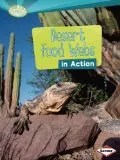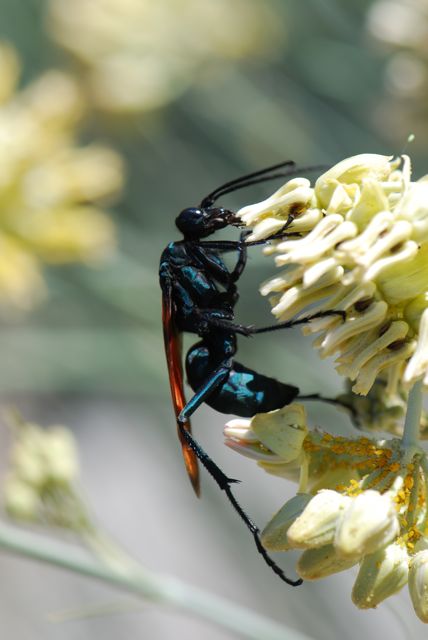Today for STEM Friday we are featuring Desert Food Webs in Action (Searchlight Books) by Paul Fleisher.

We often think of the big, flashy animals like the mountain lions and the coyotes when we think of the desert. All the living things in the desert matter though, even the tiny ones. The bigger animals depend on many plants and smaller animals to provide them with food. Decomposers like ants, fungi and bacteria are also important because they help recycle nutrients. This book describes the various desert creatures and how their lives are interrelated via food chains and food webs.
The producers are plants that gather and store energy from sunlight, like cacti, succulents, wildflowers, shrubs, trees and grasses. They produce food for the other stages.
Primary consumers are animals who depend on plants for food. Examples are insects, birds like hummingbirds, and desert tortoises.
Secondary consumers rely mostly on other animals for food. Spiders and birds that eat a lot of insects are secondary consumers.
Tertiary consumers are carnivores that eat both secondary and primary consumers. Examples are hawks and kingsnakes, a type of snake that eats other snakes.
Not shown in the illustration are scavengers and decomposers. Scavengers feed on dead animals. They are part of nature’s clean up crew. Decomposers break down both animal and plant materials so that plants can use the nutrients again.
Food webs aren’t always neat and tidy. For example, javelinas are mostly thought of as primary consumers because they eat plant materials like prickly pear fruit and mesquite beans. They are also known to eat lizards, mice and dead birds, which would make them scavengers and secondary consumers, too.
Want to learn more about desert creatures? Desert Food Webs in Action by Paul Fleisher is a good place to start.
When you are ready, why not construct a desert food web of your own?
Where to find out more:
- All about Lizards (Growing With Science)
- Desert Tortoises (Growing With Science)
- Tarantulas (Growing With Science)
- Snakes (Growing With Science)
- Saguaro Cactus (Growing With Science)
- Sonoran Desert Seek and Find Sheets (AZ-Sonora Desert Museum)
- Sonoran Desert Fact Sheets (AZ-Sonora Desert Museum)
- Make an Desert Ecosystem Diorama -scroll down (American Museum of Natural History)
Ages: 8-11
Series: Searchlight Books
Paperback: 40 pages
Publisher: Lerner Publishing Group (August 1, 2013)
Language: English
ISBN-10: 1467715522
ISBN-13: 978-1467715522
Disclosures: I am an affiliate for Amazon, and if you click through the linked titles or ads and make a purchase, I will receive a small commission at no extra charge to you. Proceeds will be used to maintain this self-hosted blog.
Come visit the STEM Friday blog each week to find more great Science, Technology, Engineering and Math books.








